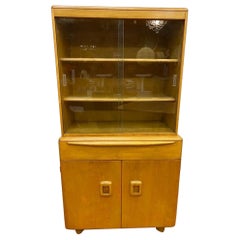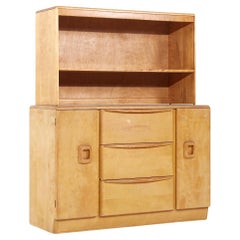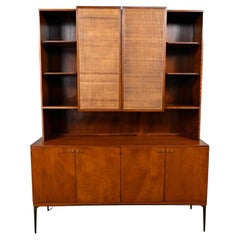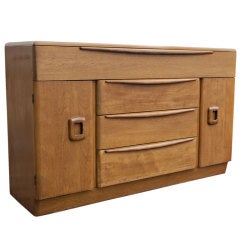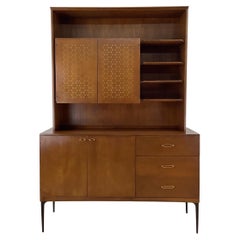Heywood Wakefield Buffet
Mid-20th Century American Mid-Century Modern Cabinets
Glass, Wood
Vintage 1970s American Mid-Century Modern Buffets
Maple
Mid-20th Century American Mid-Century Modern Cabinets
Metal
Recent Sales
Vintage 1950s American Buffets
Ash
Mid-20th Century American Mid-Century Modern Buffets
Metal
Mid-20th Century North American Mid-Century Modern Buffets
Maple
Vintage 1930s American Machine Age Buffets
Birch
Vintage 1950s Mid-Century Modern Buffets
Birch
Mid-20th Century American Mid-Century Modern Buffets
Wood, Maple
Vintage 1930s American Buffets
Maple
Vintage 1930s American Buffets
Maple
Vintage 1970s American Mid-Century Modern Sideboards
Wood
Vintage 1970s American Mid-Century Modern Sideboards
Glass, Wood
Vintage 1950s American Mid-Century Modern Credenzas
Birch
Vintage 1970s American Mid-Century Modern Credenzas
Glass, Wood
Vintage 1970s North American Mid-Century Modern Sideboards
Wood
Vintage 1970s American Mid-Century Modern Sideboards
Brass
Vintage 1950s American Mid-Century Modern Dressers
Birch
Vintage 1930s American Art Deco Sideboards
Glass, Maple
Vintage 1950s American Mid-Century Modern Buffets
Birch
20th Century American Mid-Century Modern Buffets
Birch
Vintage 1960s American Mid-Century Modern Credenzas
Maple
Vintage 1950s American Mid-Century Modern Buffets
Maple
Early 20th Century American Art Deco Buffets
Birch
Vintage 1950s American Buffets
Maple
20th Century American Mid-Century Modern Credenzas
Maple
People Also Browsed
Vintage 1960s Dutch Mid-Century Modern Daybeds
Teak, Upholstery
Vintage 1950s Italian Mid-Century Modern Chairs
Velvet
2010s German Mid-Century Modern Chandeliers and Pendants
Brass
Vintage 1950s Italian Mid-Century Modern Shelves and Wall Cabinets
Brass, Steel
Vintage 1950s Italian Mid-Century Modern Bookcases
Brass
21st Century and Contemporary Italian Mid-Century Modern Chandeliers and...
Brass
21st Century and Contemporary German Mid-Century Modern Chandeliers and ...
Brass
Vintage 1970s Swiss Mid-Century Modern Wall-mounted Sculptures
Metal
Vintage 1950s Italian Mid-Century Modern Dry Bars
Brass
Vintage 1950s American Mid-Century Modern Cabinets
Brass
Vintage 1930s Italian Art Deco Beds and Bed Frames
Brass
Mid-20th Century American Mid-Century Modern Desks and Writing Tables
Maple
Vintage 1950s French Mid-Century Modern Wardrobes and Armoires
Metal, Bronze
Vintage 1960s American Mid-Century Modern Credenzas
Aluminum, Iron
Early 20th Century European Art Deco Cabinets
Birdseye Maple, Oak
Vintage 1950s Italian Mid-Century Modern Cabinets
Brass, Steel
Heywood-Wakefield Co. for sale on 1stDibs
Created by the 19th-century merger of two venerable Massachusetts furniture makers, Heywood-Wakefield was one of the largest and most successful companies of its kind in the United States. In its early decades, the firm thrived by crafting affordable and hugely popular wicker pieces in traditional and historical styles. In the midst of the Great Depression, however, Heywood-Wakefield reinvented itself, creating instead the first modernist furniture — chairs, tables, dressers and more — to be widely embraced in American households.
The Heywoods were five brothers from Gardner, Massachusetts, who in 1826 started a business making wooden chairs and tables in their family shed. As their company grew, they moved into the manufacture of furniture with steam-bent wood frames and cane or wicker seats, backs and sides.
In 1897, the Heywoods joined forces with a local rival, the Wakefield Rattan Company, whose founder, Cyrus Wakefield, got his start on the Boston docks buying up lots of discarded rattan, which was used as cushioning material in the holds of cargo ships, and transforming it into furnishings. The conglomerate initially did well with both early American style and woven pieces, but taste began to change at the turn of the 20th century and wicker furniture fell out of fashion.
In 1930, Heywood-Wakefield brought in designer Gilbert Rohde, a champion of the Art Deco style. Before departing in 1932 to lead Herman Miller — the prolific Michigan manufacturer that helped transform the American home and office — Rohde created well-received sleek, bentwood chairs for Heywood-Wakefield and gave its colonial pieces a touch of Art Deco flair.
Committed to the new style, Heywood-Wakefield commissioned work from an assortment of like-minded designers, including Alfons Bach, W. Joseph Carr, Leo Jiranek and Count Alexis de Sakhnoffsky, a Russian nobleman who had made his name in Europe creating elegant automotive body designs.
In 1936, the company introduced its “Streamline Modern” group of furnishings, presenting a look that would define the company’s wares for another 30 years. The buoyantly bright, blond wood — maple initially, later birch — came in finishes such as amber “wheat” and pink-tinted “champagne.” The forms of the pieces, at once light and substantial, with softly contoured edges and little adornment beyond artful drawer pulls and knobs, were featured in lines with names such as “Sculptura,” “Crescendo” and “Coronet.” It was forward-looking, optimistic and built to last — a draw for middle-class buyers in the Baby Boom years.
By the 1960s, Heywood-Wakefield began to be seen as “your parents’ furniture.” The last of the Modern line came out in 1966; the company went bankrupt in 1981. The truly sturdy pieces have weathered the intervening years well, having found a new audience for their blithe and happy sophistication.
Find vintage Heywood-Wakefield desks, vanities, tables and other furniture for sale on 1stDibs.
Finding the Right Storage-case-pieces for You
Of all the vintage storage cabinets and antique case pieces that have become popular in modern interiors over the years, dressers, credenzas and cabinets have long been home staples, perfect for routine storage or protection of personal items.
In the mid-19th century, cabinetmakers would mimic styles originating in the Louis XIV, Louis XV and Louis XVI eras for their dressers, bookshelves and other structures, and, later, simpler, streamlined wood designs allowed these “case pieces” or “case goods” — any furnishing that is unupholstered and has some semblance of a storage component — to blend into the background of any interior.
Mid-century modern furniture enthusiasts will cite the tall modular wall units crafted in teak and other sought-after woods of the era by the likes of George Nelson, Poul Cadovius and Finn Juhl. For these highly customizable furnishings, designers of the day delivered an alternative to big, heavy bookcases by considering the use of space — and, in particular, walls — in new and innovative ways. Mid-century modern credenzas, which, long and low, evolved from tables that were built as early as the 14th century in Italy, typically have no legs or very short legs and have grown in popularity as an alluring storage option over time.
Although the name immediately invokes images of clothing, dressers were initially created in Europe for a much different purpose. This furnishing was initially a flat-surfaced, low-profile side table equipped with a few drawers — a common fixture used to dress and prepare meats in English kitchens throughout the Tudor period. The drawers served as perfect utensil storage. It wasn’t until the design made its way to North America that it became enlarged and equipped with enough space to hold clothing and cosmetics. The very history of case pieces is a testament to their versatility and well-earned place in any room.
In the spirit of positioning your case goods center stage, decluttering can now be design-minded.
A contemporary case piece with open shelving and painted wood details can prove functional as a storage unit as easily as it can a room divider. Alternatively, apothecary cabinets are charming case goods similar in size to early dressers or commodes but with uniquely sized shelving and (often numerous) drawers.
Whether you’re seeking a playful sideboard that features colored glass and metal details, an antique Italian hand-carved storage cabinet or a glass-door vitrine to store and show off your collectibles, there are options for you on 1stDibs.
